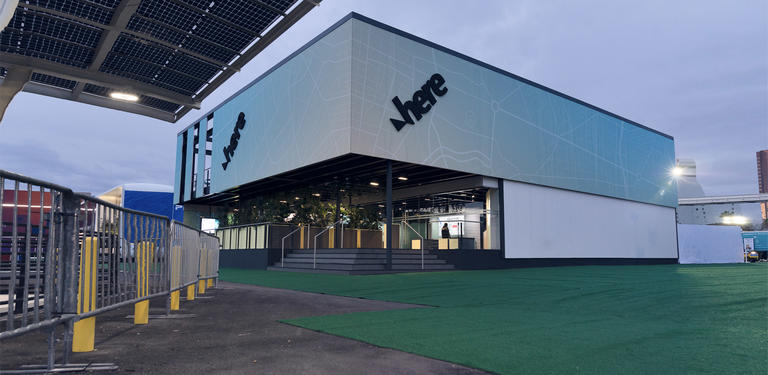CES 2023: everything we learned about the future of location technology

CES is over for another year, but the tech unveiled at the event should influence our world for some time to come. HERE360 shares the innovations that caught our eye.
Smart lighting, locks and even toilets might have been on show at CES. However, NPR described the world's biggest technology exhibition as “every bit a car show, too", and the innovations in transportation, location and logistics were every bit as dizzying.
Audience numbers were up again following pandemic-related lockdowns, and the familiar buzz was back. Running from January 5-8, CES bills itself as “the most influential tech show in the world."
This is a round-up of some of the technologies, transport modes and trends that caught our attention in Vegas.

At the Consumer Electronics Show (CES) in Las Vegas, HERE showcased how our platform helps customers, partners and developers move their projects forward.
Getting around
From what we saw at CES, cars, vans, trucks and bikes are getting more connected and electric. A Sony Honda Mobility prototype called Afeela, on show at CES promised “interactive communication between media and people."
Meanwhile, BMW i Vision Dee is a future EV sport sedan with a digital assistant that talks back to you. It may be only at the concept stage just yet, but this gives us Knight Rider feels. Its ability to change color just adds to the attraction. Our customer Vinfast's luxury EVs could also be seen whizzing HERE guests and attendees around the conference.
Elsewhere, the Icoma Tatamel e-bike could bring big changes to how we move around cities. It folds up to fit into tiny places and can recharge in just three hours – ideal for zipping about urban areas. There was even an electric speedboat.
There was good news for charging infrastructure for EVs too. Mercedes-Benz announced it will launch a global high-power charging network starting in North America. More than 400 hubs and 2,500 high-power chargers are set to be installed in the US by 2027. Batteries are getting better too, suggesting a bright future for EVs.
A new service from HERE that predicts the availability of EV charge points around the world promises to make going electric even easier.
Automation nation
Automated vehicles had their own high-profile showcase with the return of the Indy Autonomous Challenge. It set a new world record for an automated racetrack.
Elsewhere, the importance of operational design domains, that teach partially automated vehicles when and where they can take over, was highlighted. These included HERE Automated Driving Zones, enabling automakers to define the individual operational conditions needed for specific vehicles. Being able to do so safely is the key to making greater levels of automation possible. With safety in mind, HERE also launched HERE Road Alerts, using data from sensors to provide real-time warnings to drivers.
A self-driving stroller on show proved that automated vehicles are coming on leaps and bounds, and not just the ones on our roads.
Drive for sustainability
A lot of these innovations in transport have one thing in common: they help companies and countries meet emissions targets.
Sustainability and profitability may seem at odds. However, Accenture led a panel at the show exploring how it can be a driver for growth. Guests heard how 45% of emissions come from the way we make and use products and food.
“Commerce is the core of how you can design your strategies around sustainability," said Vikalp Tandon, Managing Director, North America Lead, Commerce, Accenture Song.
Reducing waste is key to cutting these carbon emissions. Not only does the production of goods take its toll on the environment, but the delivery of them does, too. At CES, we saw a glimpse of how those savings can be made.
Therefore, it was interesting to see the US Postal Service unveil its electric delivery vehicles, 66,000 of which will be added to its fleet by 2028. Not only will these trucks do away with gas and diesel, but they have increased capacity to deal with the greater volume of mail now being sent out.
Delivery robots were on display at CES too, including the 200-pound Ottobot Yeti, designed for curbside and last-mile delivery jobs. Intriguingly, the Apogee exosuit is an exoskeleton that can be used in warehouses or by anyone for whom heavy lifting is a part of their job. It offered a hint that rather than being in opposition, humans and robotics can work together for the best logistics solutions.
Along with predictive analytics tools, these approaches gave us hope that the supply chains of the future will be sustainable, efficient and ready to meet the challenges of tomorrow.
Have your say
Sign up for our newsletter
Why sign up:
- Latest offers and discounts
- Tailored content delivered weekly
- Exclusive events
- One click to unsubscribe


